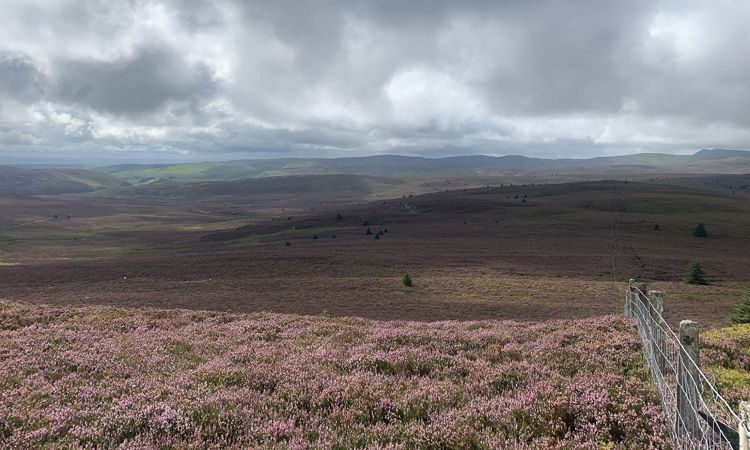Protected habitats to be boosted on Berwyn mountains

Work is underway to remove invasive conifers from the Berwyn mountains in Denbighshire to help boost rare and protected habitats.
Natural Resources Wales (NRW) has led on plans to clear self-seeded conifers that covers nearly 700 hectares (ha) within the Berwyn Special Site of Scientific Interest (SSSI) and wider Berwyn a Mynyddoedd de Clwyd / Berwyn and South Clwyd Mountains Special Area of Conservation (SAC).
Conifers, such as Sitka spruce and lodgepole pine, are not native to Wales and have a detrimental effect as they dry out the surrounding dry heath and blanket bog habitats, both of which are European protected habitats.
Contractors have been using a tracked mulcher to remove the larger conifers whilst chainsaws have been used on smaller ones, with much of the tree matter being chipped and left to decompose on site.
NRW officers have been working closely with both local landowners and colleagues from RSPB Cymru to carry out the work. The work is due to be completed in 2025.
Spanning 27,132ha, the Berwyn and South Clwyd Mountains SAC boasts the largest area of blanket bog and European dry heath in Wales. Berwyn is also the most important upland in Wales for breeding birds and supports a wide range of species including internationally significant numbers of black grouse and curlew.
Bathilda Milton-Haynes, NRW Natura 2000 officer for the Berwyns, said:
“The self-seeded conifers found on the Berwyn mountains are a ‘negative indicator’ species in terms of SSSI management designed to protect the area’s special habitats. As much as we want trees, we need the right tree in the right place.
“As conifers get larger, they then start producing cones and become an ever-increasing issue, and so it’s crucial that we minimise the damage they cause.
“Blanket bog and dry heath contain a wide diversity of plants only found in these nutrient poor upland areas, specially adapted to the cooler, windier climate, and more acidic soils. It is important these remain unaffected by invasive species such as conifers which can alter the ecological balance.
“Improving the habitat at a landscape level is important to NRW and our colleagues as we work towards not just increasing numbers of species such as black grouse, but also in restoring the hydrological balance and rewetting the blanket bog.
“The work will also help maintain and trap the carbon stores held within the area’s peat and will be a small yet important step in tackling the ever-increasing challenges offered by climate change.”
Anya Wicikowski, RSPB Cymru Conservation Officer for the Black Grouse Recovery project, said:
“We are facing an unprecedented nature and climate crisis. To reverse these effects, we must make the ecosystems we have deliver for people, climate, and nature.
“Sitka Spruce is grown in the uplands of Wales for timber, however the proximity to our finest protected sites means it is one of the factors damaging such valuable peatland areas like the Berwyn. Restoring this area to Blanket Bog and Dry Heath will allow nature to thrive, with a plethora of other benefits. Working in partnership across the landscape as a whole is allowing us to be more effective and impactful.
“We hope to continue this work into the future to help ensure our finest protected land areas are delivering for biodiversity and climate such as the Black Grouse and birds of prey which call these places home.”
Ms Portia Kennaway, a local landowner, said:
“As an organic, conservationist farm for over 30 years we are extremely grateful to NRW and RSPB Cymru for the very important work they have carried out on the mountain, and we are thrilled with the results.
“Bathilda and Anya have achieved amazing things in this project, way beyond our expectations, and it has been a pleasure to work with them, everyone involved has been cooperative, efficient and highly sensitive to the particular vulnerabilities of the site. Special thanks should also go to Keith Offord, Birds of Prey Officer for the area.”
